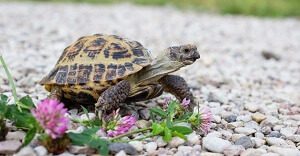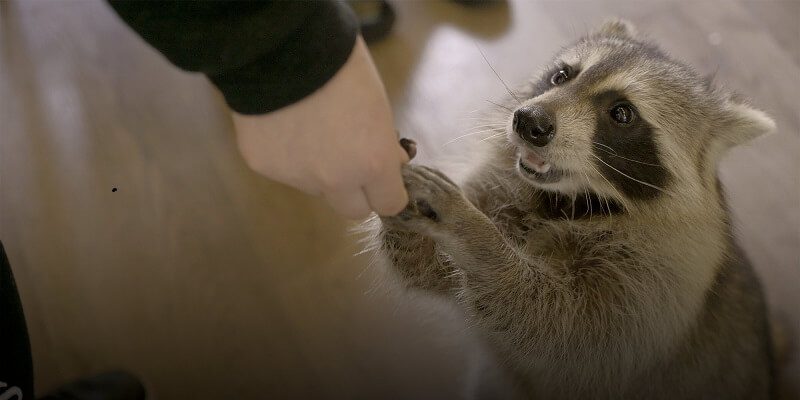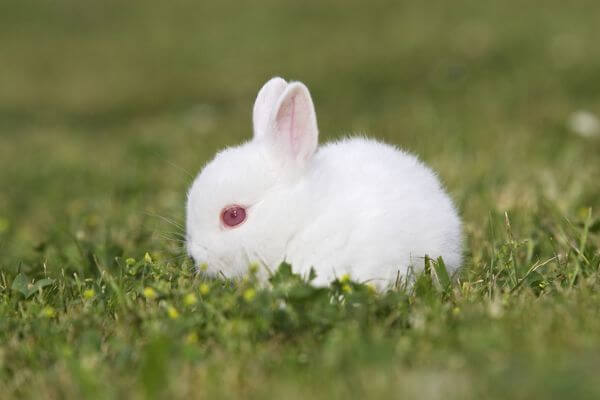One great pet for kits that is pretty active but still easy to keep, is the Russian tortoise. This article will give you a lot of valuable information about the Russian Tortoise, including its lifespan.
The small size and pretty active personality make the Russian tortoise very interesting not only for kids but for adults as well. It is also a docile creature, which is why this is a very popular choice for parents that want to teach their children some responsibility. One of the very few issues you will have with it is its borrower character, which might turn it into a garden destroyer if you aren’t careful enough.
Their Life Span
As you might expect, the Russian tortoise will probably live your whole life and maybe even outlive you for a few more years. This means that the Russian Tortoise has one of the longest lifespans in the animal kingdom. Experts agree that these creatures can easily live around 100 years in the wild. In captivity, though, things are slightly different and a Russian tortoise kept as a pet will usually only live for about 50 years on average if you attend to its every need.
You might also like my articles on whether tortoises eat celery, the lifespan of red-eared sliders, and information on baby snapping turtles.
Some Facts
The scientific name of the Russian tortoise is Testudo horsfieldii or Agrionemys horsfieldii. Just recently it managed to get its own genus as well, called Agrionemys. Even so, experts still call these tortoises Testudo horsfieldii. The Russian tortoise has a lot of other common names including:
- Steppe tortoise
- Horsfield’s tortoise
- Four-toed tortoise
- Central Asian tortoise
- Afghanistan tortoise
- Afghan tortoise
Their Size
The size of the Russian tortoise is what makes it a really well-known family pet. The carapace length of hatching will be about 1 inch and the maximum length it will reach when becoming an adult will be between 8 and 10 inches. When reaching adulthood, males will be slightly smaller than females. When females are about 6 inches long, they will be able to reproduce and will lay eggs. When Russian tortoises are captured to be exported, they will be around 4 to 5 inches long, so they will basically be adults in becoming.
Availability
The captive production of the Russian tortoise is very low, which is why most specimens are imported to North America from other places. This is why, regardless of where you get your Russian tortoise from, it will most likely be caught in the wild. The captive-bred tortoises will usually be sold a lot cheaper than imported ones and will also be younger.
Their Habitat
This creature will usually be found in places like Afghanistan, northwestern Pakistan, eastern Iran, and Eastern Russia. It likes areas with sparse vegetation and dry weather. The environment of their choice will be a place with cold winter seasons and hot summer seasons, which would include hilly and rocky areas. This tortoise will usually build its own burrow that can be even 2 meters long but has no issues in occupying burrows abandoned by other animals either.
Housing
 If you live in an area with warmer weather, you should keep the Russian tortoise in an outdoor enclosure. One tortoise won’t need more than 2 to 4 feet for the enclosure. Its walls will have to be built 7 to 12 inches below ground level. This is to prevent the tortoise from digging a hole through which it might escape. When kept in a colder or hotter climate, it will insulate itself by going underground. If you want to prevent your tortoise from burrowing too much but still want to offer it to be able to maintain a stable temperature, then you should hide some boxes underground for the pet to go in.
If you live in an area with warmer weather, you should keep the Russian tortoise in an outdoor enclosure. One tortoise won’t need more than 2 to 4 feet for the enclosure. Its walls will have to be built 7 to 12 inches below ground level. This is to prevent the tortoise from digging a hole through which it might escape. When kept in a colder or hotter climate, it will insulate itself by going underground. If you want to prevent your tortoise from burrowing too much but still want to offer it to be able to maintain a stable temperature, then you should hide some boxes underground for the pet to go in.
Tortoises will be active in the wild when the temperature is between 60 and 90 ºF. It will consider the weather too hot if it goes over 100 ºF. It is a creature that hibernates during the winter, using the same digging and hiding underground trick as the cold sets in. If you want to keep it inside, it won’t have any problems at room temperature, as long as this temperature is between 60 and 80 ºF.
You can also place a basking lamp in its enclosure that should be kept at a temperature of around 90 to 100 ºF. Having UV light around the tortoise will also be beneficial in helping it process the calcium from its diet. When kept indoors the tortoise won’t feel the need to hibernate. You will have to keep a strict day and night cycle and a stable temperature in the enclosure for the pet to have the best conditions. To keep the tortoise as healthy as possible, turn off the heat and light sources during the night.
Diet
This creature is known to eat all sorts of things and is not at all fussy. You can feed it spring mixes and leafy green vegetables without an issue. They also like to eat dark lettuce, kale, collard greens, and turnip greens. Along with a balanced diet, it should also receive plenty of clean, fresh water. When drinking the water from the tray, it will usually sit in and from time to time it will even defecate there. This is why you should change its water a few times each day and you should also move the tortoise when you notice it standing in the water.
Conclusion
When you think about getting a pet, you need to understand that you will have to live with it for the rest of your life and that its wellbeing will be your responsibility. When you get a Russian tortoise things are even more complicated because it might even live to be the pet of your grandchildren, so make sure you really want one before getting it.




